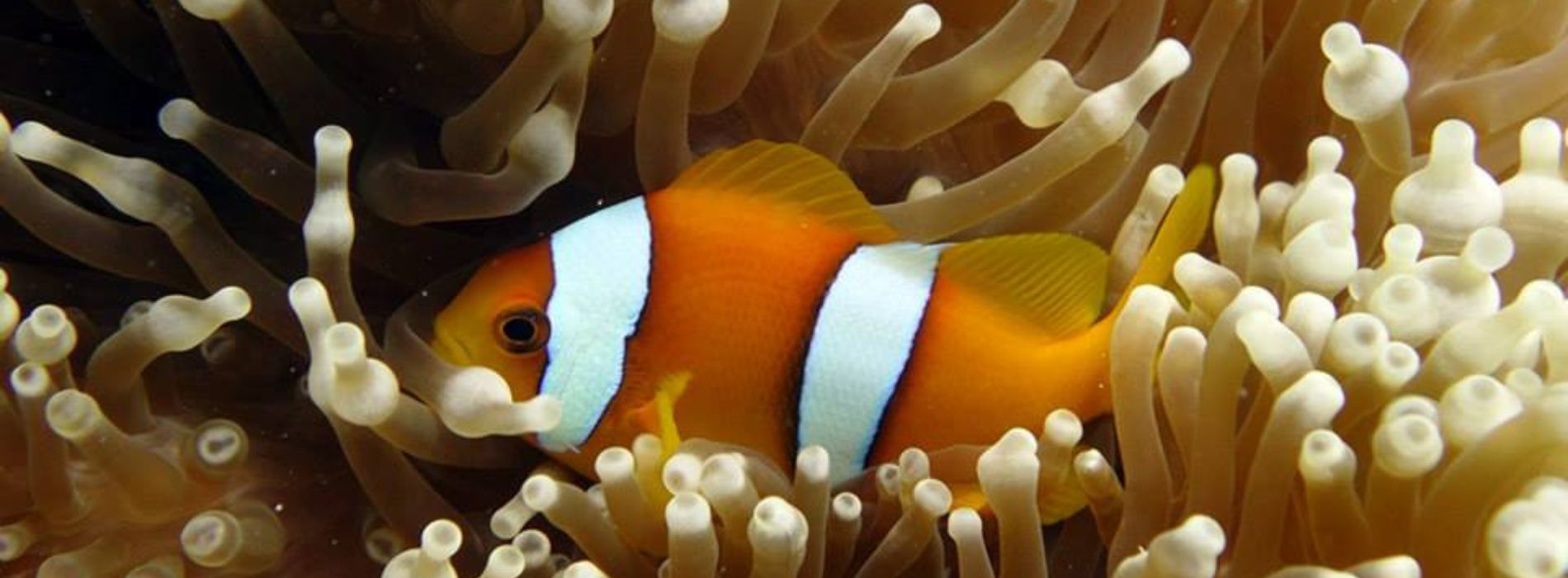Table des matières
- Introduction
- Taxonomie et classification
- Distribution et habitat
- Caractéristiques physiques
- Comportement social
- Reproduction
- Régime alimentaire et habitudes alimentaires
- Prédateurs et menaces
- Statut de conservation
- Importance pour l'écosystème
- Interaction avec les humains
- Nos derniers mots
2. Taxonomie et classification

Le poisson-clown des Chagos appartient à la famille des Pomacentridae , qui comprend un groupe diversifié de poissons marins appelés demoiselles . Au sein de cette famille, il appartient au genre Amphiprion , qui comprend plus de trente espèces reconnues de poissons-clowns . Son nom scientifique, Amphiprion chagosensis, est dérivé de son genre et de la région où il se trouve, l' archipel des Chagos dans l'océan Indien.
3. Distribution et habitat

L'Amphiprion chagosensis est endémique de l'archipel des Chagos, un groupe isolé d'atolls coralliens situé dans le centre de l'océan Indien . Cet archipel est réputé pour ses récifs coralliens immaculés, ses eaux cristallines et sa vie marine abondante. Dans cet habitat, le poisson-clown des Chagos habite les lagons abrités et les pentes extérieures des récifs , où il noue des relations mutualistes avec les anémones.
4. Caractéristiques physiques
Le poisson-clown des Chagos est un petit poisson aux couleurs vives, mesurant environ 7 à 10 centimètres de long . Son corps est de forme ovale, avec un motif de couleur distinctif composé de trois barres blanches bordées de noir , sur un fond orange vif. Ces couleurs vives contribuent non seulement à sa beauté, mais servent également d'avertissement aux prédateurs potentiels.
5. Comportement social

Les poissons-clowns des Chagos sont connus pour leur comportement social fascinant. Ils vivent en petits groupes appelés harems , composés d'un couple reproducteur dominant et de plusieurs individus non reproducteurs . La femelle dominante est le membre le plus grand et le plus agressif du groupe. En l'absence de femelle dominante, le mâle dominant se transforme en femelle, démontrant ainsi sa capacité unique à changer de sexe .
6. Reproduction
Le comportement reproducteur d' Amphiprion chagosensis est à la fois intrigant et complexe. Le couple reproducteur dominant est responsable de la production et de la protection des œufs . Pendant la parade nuptiale, le mâle exécute une danse élaborée pour attirer une femelle , qui se termine par la ponte de ses œufs sur un substrat approprié près de l' anémone hôte. Le mâle féconde ensuite les œufs et assume le rôle de gardien et d'aérateur jusqu'à leur éclosion.
7. Régime alimentaire et habitudes alimentaires

Les poissons-clowns des Chagos ont un régime alimentaire spécialisé composé à la fois de zooplancton et d'algues . Ils se nourrissent de petits invertébrés , tels que des copépodes et des amphipodes , ainsi que des restes de nourriture de leur anémone hôte. Ces poissons ont une relation mutuellement bénéfique avec leur anémone hôte, car ils contribuent à la garder propre en consommant des parasites et des tissus morts .
8. Prédateurs et menaces
Malgré leurs couleurs vives et leur anémone venimeuse, les Amphiprion chagosensis ne sont pas à l'abri de la prédation. Ils sont menacés par des poissons prédateurs plus gros, comme les mérous et les vivaneaux , ainsi que par les mammifères marins et les oiseaux de mer . Le changement climatique et la dégradation des récifs coralliens constituent également des menaces importantes pour leur habitat et leur survie.
9. Statut de conservation

Le poisson-clown des Chagos est actuellement classé comme une espèce de préoccupation mineure par l' Union internationale pour la conservation de la nature (UICN). Cependant, l'écosystème plus vaste qu'il habite, y compris l'archipel des Chagos, est menacé par diverses activités humaines , telles que la surpêche et la destruction de l'habitat . Des efforts sont déployés pour protéger l'archipel des Chagos et sa biodiversité unique.
10. Importance pour l’écosystème
Les Amphiprion chagosensis jouent un rôle essentiel dans l'écosystème de l'archipel des Chagos. Ils servent d'indicateurs de la santé des récifs coralliens , car leur présence est étroitement liée à la présence d'anémones en bonne santé. De plus, ils contribuent au cycle des nutriments et au flux d'énergie au sein de l'écosystème récifal grâce à leurs habitudes alimentaires.

11. Interaction avec les humains
L'archipel des Chagos est une zone protégée et l'accès à ses eaux est restreint. Par conséquent, les interactions directes entre Amphiprion chagosensis et les humains sont limitées. Cependant, leurs couleurs vives, leur comportement unique et leur association avec l'emblématique anémone en ont fait des sujets populaires pour la photographie sous-marine et la recherche scientifique.
12. Nos derniers mots
En conclusion, le poisson-clown des Chagos, avec ses couleurs éclatantes, son comportement fascinant et son importance pour l’écosystème marin, est une véritable merveille du monde sous-marin. Alors que nous continuons à explorer et à comprendre les secrets de cette espèce captivante, reconnaissons également la nécessité de protéger son habitat fragile et l’environnement marin au sens large pour assurer la survie de cette créature enchanteresse pour les générations à venir.
si vous voulez en savoir plus sur le poisson clown, n'hésitez pas à cliquer ici !
Nous espérons que vous avez apprécié cet article sur le poisson-clown des Chagos !
N'hésitez pas à vous abonner à notre newsletter privée pour recevoir des articles plus exclusifs. Vous bénéficierez également d'une remise bonus de 10 % sur notre catalogue du monde marin. Vous serez averti par e-mail chaque fois que nous publierons un nouveau merveilleux bijou morceau de l'océan.
N'hésitez pas également à aller découvrir notre site web, nous fournissons le meilleur contenu marin et nous vous proposons les meilleurs bijoux nautiques du monde entier !





















